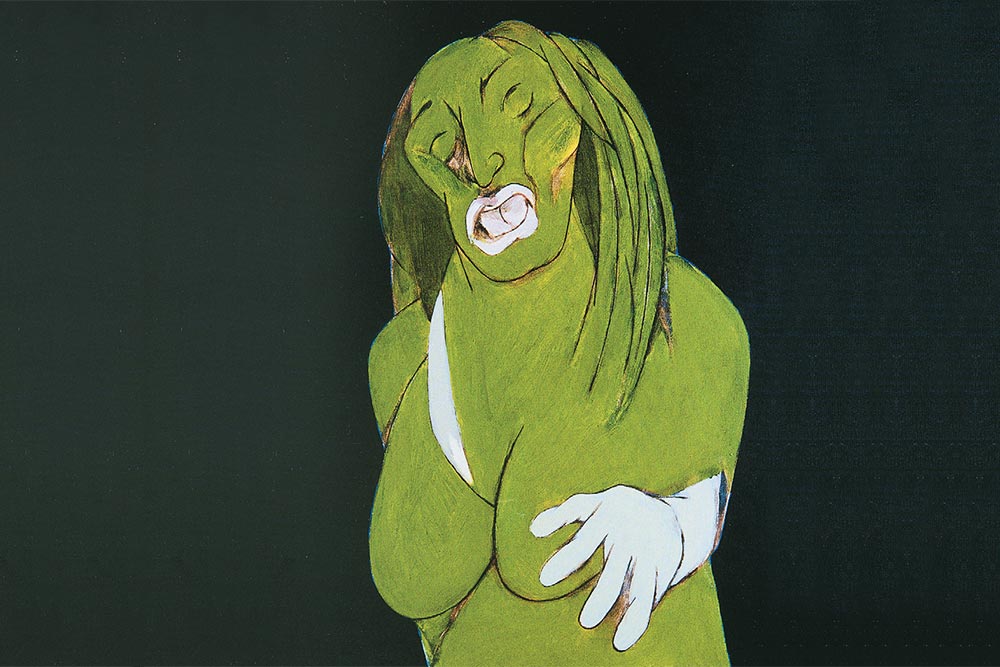When you buy a Land-Rover, or a Hugo Boss suit, you don’t think of it as an “investment”, but mention art and someone is bound to ask how much an artist will appreciate by. Urban legends, it seems, consist of these magical words, “I bought this [FN] Souza” — or Atul Dodiya or any other artist — “for Rs.50,000, but now it’s worth Rs.50 lakh!”
But finding and betting on emerging artists is slipperier than the Sensex. So when it comes to liquidity, or building investor confidence, the known name will triumph over the experimental or unknown in a secondary sale. And there are rules for displaying art work at different places in your personal space. Here’s a quick list of what to put up and where.
Boardroom: If you wish to make a mark in the sanctum-sanctorum of the office, you can do no better than MF Husain, whose trademark horses provide a mix of recognition and fiscal adrenalin. Even though Husain was prolific in his life, his works are now being sought by collectors, so you could end up spending anything from Rs.10-15 lakh for a drawing to upwards of Rs.1 crore for his works on canvas, and yes: they are an investment.
Corner offices: You’d think you should be allowed to exercise your personal choice when it comes to your own office — right? Wrong. A head honcho’s office is a reflection of the company and its fiscal health, so it’s best to choose art that’s non-fussy (KS Radhakrishnan’s sculptures rather than Ravinder Reddy’s heads, for instance), but it needs to be distinguished. The progressives and other modernists are a reflection of this, and proclaim a certain heritage: Souza (but not his nudes), KH Ara’s still-lifes, works by Tyeb Mehta (if you can afford them), Akbar Padamsee, Jehangir Sabavala, Krishen Khanna and Co. Allow for small works, in interesting pairings, and you could manage a smart selection in a crore or two. Big canvases will set you back by as much for single works.
Reception: The part of the office that gets all the footfalls and eyeballs, the reception should reflect a company’s forward looking policy, which is best represented by artists such as Jitish Kallat, though anyone from Jagannath Panda to Sudhanshu Suttar, NS Harsha to Sujata Kejriwal should be appropriate, and you could have a great conversation point for approximately Rs.20-30 lakh.
Office corridors: Research states that offices with art make happier (more creative?) workplaces. The Deutsche Bank HQ in Frankfurt has made it a policy to invest in art from different countries and has Indian artists in that collection. The office environment can be enhanced by works of emerging artists (ensure that you have interesting rather than decorative art), though a good — even safer — bet may be to be collect fine art prints (these are “original” works) that can be a mix of the modern and the contemporary and can be acquired from Rs.10,000 to Rs.1 lakh apiece — and yes, they will likely multiply in value.
Hotels: The Taj Mahal Hotel in Mumbai has a fantastic collection of art, as does ITC Maurya in New Delhi. Leela Palace in the capital has chosen to go with sure-fire artists like Satish Gupta and Jayasri Burman, others prefer abstracts by Gopi Gajwani, or — as the Pullman in Gurgaon has done — a kiln-fired assemblage by potter PR Daroz. A Lalit might have a signature Husain, a Taj might opt for Anjolie Ela Menon; it’s a good idea to mix the known with the lesser-known for what may well be a one-time cost that will pay rich dividends over time. (In a parallel industry — aviation — Air India has a collection of art that has been estimated at Rs.350 crore.)
Homes: Living spaces tend to be personal, allowing you to reflect more eclectic tastes, and collectors have managed to combine the masters and contemporary artists with aplomb — old favourite Krishen Khanna with Skoda-awardee Mithu Sen, for instance, or Rabindranath Tagore with the highly regarded Paresh Maity. A good example is Lekha and Anupam Poddar (the mother’s collection of antique statuary and masters such as Jamini Roy set off by the son’s edgier contemporaries such as Subodh Gupta and Bharti Kher, as well as Pakistani and Iranian artists) home collection. Jeroo Mango in Mumbai, Rajshree Pathy in New Delhi, Kiran Mazumdar-Shaw in Bengaluru are examples of those whose tastes range from the Bengal masters to Baroda artists to those who are making waves with their sensibilities. You may not be able to put a price to the collection, but you can be sure that a mixed bag of art has excellent liquidity, should it come to the crunch.
The author is a Delhi-based writer and curator











